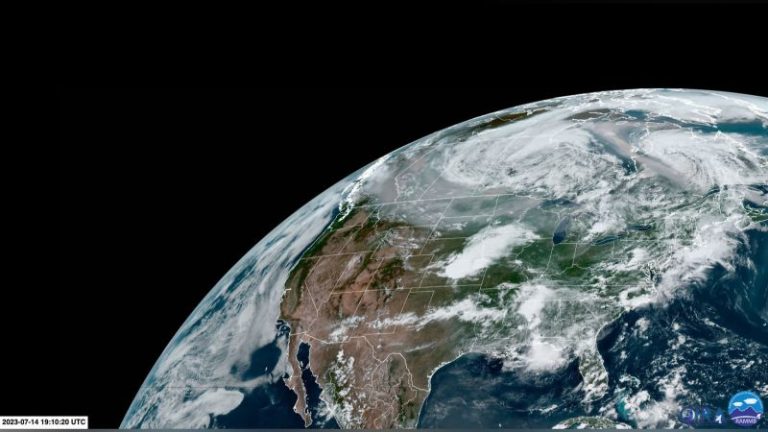Canadian wildfire smoke continues to plague the United States, triggering air quality alerts for at least 11 states across the northern Plains, Midwest, and Great Lakes region Sunday.
From Montana to Ohio, forecasters predicted nearly 60 million people would see decreased visibility and poor air quality, including residents of Chicago, Detroit, St. Louis, Cedar Rapids and Cleveland.
A large swath of the northern Plains from Montana through Illinois had an Air Quality Index in the “unhealthy” range, which is Level 4 of 6, on Sunday.
“While the concentration of smoke in the atmosphere should begin to wane by Monday, there is still enough smoke to support unhealthy air quality that is unhealthy for sensitive groups in parts of these regions into the start of the upcoming week,” according to the National Weather Service’s Weather Prediction Center.
Winds will continue to push the smoke eastward, bringing a smoky haze to the Northeast early in the week.
The plume was birthed from nearly 400 fires ignited in Canada’s province of British Columbia in the past week, nearly half of which were started by 51,000 lightning strikes from thunderstorms, the British Columbia Wildfire Service said. Some of those thunderstorms were “dry” or produced inconsequential amounts of rain to help quench any fires – a dangerous prospect in a province experiencing the worst level of drought.
A firefighter died Thursday responding to a blaze near Revelstoke, a town in southeastern British Columbia, Canadian officials said.
Wildfire smoke contains tiny pollutants known as particle matter, or PM 2.5, that can get into the lungs and bloodstream once inhaled. These pollutants most commonly cause difficulty breathing and eye and throat irritation, but have also been linked to more serious long-term health issues like lung cancer, according to the US Centers for Disease Control and Prevention.
Parts of the US will be at risk of smoke for the foreseeable future depending on weather patterns and fire flareups because Canada is experiencing its worst fire season on record. More than 24 million acres have burned so far this year, an area that is roughly the size of Indiana.
British Columbia has had more than 1,000 fires start since April. Those fires have already burned through nearly three times the amount of land compared to an average year in British Columbia over the last 10 years, the province’s wildfire service said.

